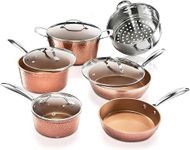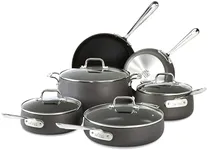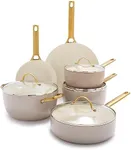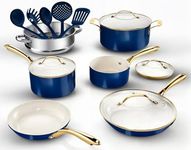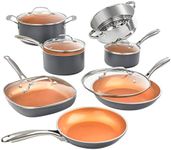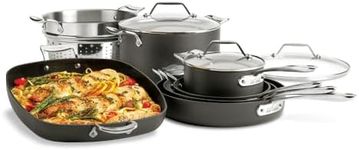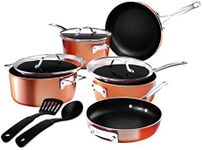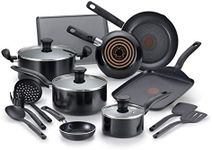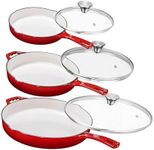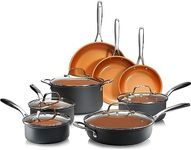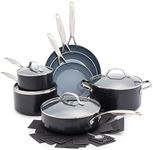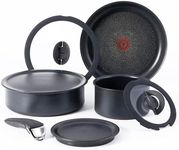Buying Guide for the Best Nonstick Cookware Sets
Choosing the right nonstick cookware set can make your cooking experience easier, healthier, and more enjoyable. Nonstick cookware is popular because it requires less oil, is easy to clean, and is great for cooking delicate foods like eggs or pancakes. When shopping for a set, it's important to look beyond just the number of pieces and focus on the features that will best suit your cooking habits and kitchen setup.Nonstick Coating TypeThe nonstick coating is what prevents food from sticking to the cookware. The most common types are PTFE (often known by the brand name Teflon) and ceramic. PTFE coatings are very slick and durable, while ceramic coatings are often marketed as more environmentally friendly and free from certain chemicals. If you want a pan that is very easy to clean and lasts a long time, PTFE is a good choice, but if you are concerned about chemicals, ceramic might be better. Consider how often you cook and what you cook most—if you use high heat or metal utensils, you may want to look for a more durable coating.
Number and Types of PiecesCookware sets can range from a few essential pans to large collections with many specialized pieces. Think about what you actually use: do you need multiple frying pans, saucepans, or a stockpot? A basic set with a skillet, saucepan, and a larger pot is enough for most people, but if you cook a variety of dishes, a larger set might be helpful. Avoid sets with many pieces you won’t use, as they take up space and add cost.
Material and ConstructionThe base material of the cookware affects how evenly it heats and how long it lasts. Common materials include aluminum, hard-anodized aluminum, and stainless steel with a nonstick coating. Aluminum heats quickly and evenly, making it good for most home cooks, while hard-anodized aluminum is more durable and resistant to scratches. Stainless steel bases are heavier and can be more durable, but may cost more. Choose a material that matches your cooking style—if you want lightweight and easy to handle, go for aluminum; if you want something sturdier, consider hard-anodized or stainless steel.
Oven and Dishwasher SafetySome nonstick cookware can be used in the oven or cleaned in the dishwasher, while others cannot. Oven-safe cookware lets you start dishes on the stove and finish them in the oven, which is useful for recipes like frittatas or casseroles. Dishwasher-safe cookware is easier to clean, but frequent dishwasher use can wear down the nonstick coating faster. If you often bake or want easy cleanup, check these features and pick a set that matches your habits.
Handle Design and ComfortHandles can be made from metal, silicone, or plastic, and their design affects how comfortable and safe the cookware is to use. Metal handles are oven-safe but can get hot, while silicone or plastic handles stay cooler but may not be oven-safe. Look for handles that feel comfortable in your hand and are securely attached. If you have limited grip strength or cook for long periods, ergonomic handles can make a big difference.
Compatibility with CooktopsNot all nonstick cookware works on every type of stove. If you have an induction cooktop, you need cookware with a magnetic base. Most nonstick pans work on gas and electric stoves, but always check the packaging or product details. Make sure the set you choose is compatible with your stove to avoid disappointment.
